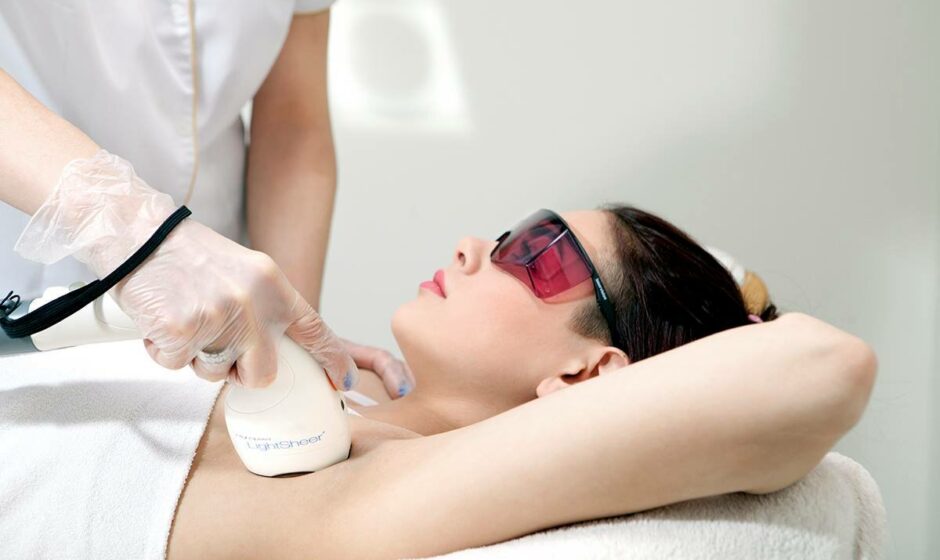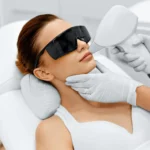Ingrown hairs can be a frustrating and painful issue, often causing redness, bumps, and irritation. If you’re tired of dealing with this pesky problem, laser hair removal might just be the solution you need. This treatment not only helps in reducing unwanted hair but also has a significant impact on ingrown hairs. Let’s dive into how laser hair removal works and its effects on ingrown hairs.
Laser Hair Reduction in Bournemouth is a popular option for those seeking a more permanent solution to hair removal. But how does it fare against ingrown hairs? Read on to find out more!
What Are Ingrown Hairs?
Ingrown hairs occur when a hair grows back into the skin instead of out of it. This can lead to inflammation, bumps, and even infection. They are often a result of shaving, waxing, or tweezing, which can cause the hair to curl back into the skin.
How Laser Hair Removal Works
Laser hair removal uses concentrated light to target the pigment in hair follicles. The light converts into heat, which damages the follicles and inhibits future hair growth. Unlike traditional methods like shaving or waxing, which can contribute to ingrown hairs, laser hair removal offers a more effective and long-term solution.
Benefits of Laser Hair Removal for Ingrown Hairs
1. Reduces Hair Growth
One of the primary benefits of laser hair removal is its ability to significantly reduce hair growth. By targeting the hair follicle, the treatment makes it less likely for hairs to grow back and potentially become ingrown.
2. Minimises Skin Irritation
Traditional hair removal methods can cause skin irritation, leading to inflammation and ingrown hairs. Laser hair removal is less likely to irritate the skin, as it doesn’t involve pulling or cutting the hair.
3. Long-Term Solution
Laser hair removal offers a long-term solution to hair removal. With multiple sessions, you can expect a significant reduction in hair growth, which in turn reduces the chances of ingrown hairs.
What to Expect During a Laser Hair Removal Session
1. Consultation
Before your treatment, you’ll have a consultation with a specialist. They will assess your skin type, hair colour, and overall suitability for the procedure.
2. Preparation
On the day of the treatment, the area to be treated will be cleaned, and a cooling gel may be applied to your skin. This helps to protect your skin and enhance the effectiveness of the laser.
3. The Procedure
During the procedure, a laser device will be passed over the area, targeting the hair follicles. You may feel a slight tingling or warming sensation, but most people find the treatment relatively comfortable.
4. Post-Treatment Care
After the session, your skin may be slightly red and sensitive. It’s essential to follow the aftercare instructions provided by your specialist to minimise discomfort and avoid complications.
How Many Sessions Are Required?
The number of sessions required varies from person to person, depending on factors such as hair thickness, hair colour, and the area being treated. Generally, 6-8 sessions are recommended for optimal results. Regular sessions help to target hairs in their different growth stages, leading to a more comprehensive reduction.
Potential Side Effects
While laser hair removal is generally safe, some people may experience side effects such as redness, swelling, or slight discomfort. These effects are usually temporary and subside within a few hours to a few days.
Comparing Laser Hair Removal to Other Methods
1. Shaving
Shaving can often lead to ingrown hairs because it cuts the hair at an angle, encouraging it to grow back into the skin. In contrast, laser hair removal reduces hair growth and prevents this issue.
2. Waxing
Waxing pulls hair out from the root, which can cause irritation and ingrown hairs. Laser hair removal, on the other hand, targets the hair follicle to prevent future hair growth altogether.
3. Depilatory Creams
Depilatory creams dissolve hair at the skin’s surface but don’t address the root cause of ingrown hairs. Laser hair removal provides a more long-term solution by targeting the follicle directly.
Aftercare Tips for Optimal Results
1. Avoid Sun Exposure
After your treatment, it’s crucial to protect your skin from the sun. Use a high SPF sunscreen to prevent pigmentation changes and ensure the best results.
2. Keep the Area Clean
Maintain good hygiene to prevent infections and reduce the risk of ingrown hairs. Gently cleanse the treated area and avoid using harsh exfoliants.
3. Moisturise Regularly
Keep your skin hydrated to help it heal and reduce any post-treatment dryness or irritation. Use a gentle, fragrance-free moisturiser.
Conclusion
Laser hair removal offers a highly effective solution for reducing and preventing ingrown hairs. By targeting the hair follicles and significantly reducing hair growth, this treatment helps to keep your skin smooth and free from the irritation associated with traditional hair removal methods. If you’re dealing with stubborn ingrown hairs and looking for a long-term solution, laser hair removal might just be what you need.




